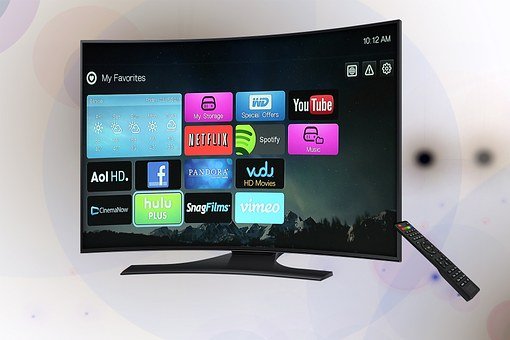

In 2022, buying a new TV is just as confusing as ever. The best TVs advertise numerous confusing features like HDR, Ultra HD 4K, 120Hz and HDMI 2.1, which make it difficult to figure out what’s actually worthwhile. Two of the biggest TV terms you’ll see are QLED and OLED. They’re only one letter apart, but the technologies they describe are very different.
For the last few years, Samsung has been branding its TVs “QLED.” Its 2022 QLED lineup includes Neo QLED models in 4K and 8K resolution, The Frame art TV, Serif and the Sero rotating TV all bearing the ubiquitous Q. And Samsung isn’t the only one. TCL also makes QLED TVs, including the CNET Editors’ Choice 6-Series.
On the other side of the fence are OLED TVs. In the last few years LG has dominated the OLED market and its 2022 OLED TV lineup is more extensive than ever, but Sony and Vizio also make OLED TVs in the US. And adding to the confusion, Samsung has an OLED TV of its own in 2022, so it will sell both OLED and QLED TVs this year.
So what’s the difference between OLED and QLED? We’ll start with picture quality. In our side-by-side comparison reviews, OLED beats QLED every time. We compared the best 2021 LG OLED TV — the LG G1 series — against the best 2021 Samsung QLED TV, the QN90A series. The Samsung QLED came closer than ever to the LG OLED, but the LG still won. A more recent example pitted a TCL 8K QLED TVagainst the 2022 LG OLED C2. Again, the OLED TV won.
Let’s start with a quick breakdown.
The main takeaway is that QLED is closer to regular old LCD than it is to OLED, which I (and most other experts) consider a distinctly different class of television, much like plasma before it.
Quantum dots are microscopic molecules that, when hit by light, emit their own differently colored light. In QLED TVs, the dots are contained in a film, and the light that hits them is provided by an LED backlight. That light then travels through a few other layers inside the TV, including a liquid crystal (LCD) layer, to create the picture. The light from the LED source is transmitted through the layers to the screen’s surface, which is why we say it’s “transmissive.”
Samsung has been using quantum dots to augment its LCD TVs since 2015 and debuted the QLED TV branding in 2017. Samsung says those quantum dots have evolved over time — that color and light output have improved, for example. In my experience, however, improvements caused by better quantum dots are much less evident than those caused by other image quality factors (see below).
Other TV makers also use quantum dots in LCD TVs, including Vizio and Hisense, but don’t call those sets QLED TVs.
LCD is the dominant technology in flat-panel TVs and has been for a long time. It’s cheaper than OLED, especially in larger sizes, and numerous panel-makers can manufacture it.
OLED is different because it doesn’t use an LED backlight to produce light. Instead, light is produced by millions of individual OLED subpixels. The pixels themselves — tiny dots that compose the image — emit light, which is why it’s called an “emissive” display technology. That difference leads to all kinds of picture quality effects, some of which favor LCD (and QLED), but most of which favor OLED.
Aside from the US brands mentioned above, Panasonic, Philips, Grundig and others sell OLED TVs in Europe. All OLED TVs worldwide, including those in the US, use panels manufactured by LG Display.
That’s about to change, however. Samsung and Sony will soon debut the first OLED TVs made by Samsung Display. They promise improved color and brightness compared to current OLED TVs because they use quantum dots — just like QLED TVs. Called QD-OLED or QD Display, they’re sure to be quite expensive at first, even more than standard OLED TVs, but prices will come down eventually.
Based on my reviews, here are some general comparisons I’ve made between the two.
Samsung and TCL each have multiple QLED series and the most expensive ones perform a lot better than the cheaper ones. That’s mainly because the biggest improvements in the picture quality of QLED sets don’t have much to do with quantum dots. Instead they’re the result of mini-LED backlights, better full-array local dimming, bright highlights and better viewing angles, which help them outperform QLED (and non-QLED) TVs that lack those extras.
Meanwhile, every OLED TV I’ve reviewed has very similar image quality — all have earned a 10/10 in picture quality in my tests. There’s some variation among different OLED TVs, for example the LG A2 with its 60Hz panel compared to 120Hz on other OLED TVs, but they’re not nearly as significant as the differences between various QLED TV series.
One of the most important image quality factors is black level, and their emissive nature means OLED TVs can turn unused pixels off completely, for literally infinite contrast. QLED/LCD TVs, even the best ones with the most effective full-array local dimming, let some light through, leading to more washed-out, grayer black levels and blooming around bright sections.
The brightest QLED and LCD TVs can get brighter than any OLED model, which is a particular advantage in bright rooms and with HDR content. In my tests, however, OLED TVs can still get plenty bright for most rooms, and their superior contrast still allows them to deliver a better overall HDR image than any QLED/LCD TV I’ve tested.